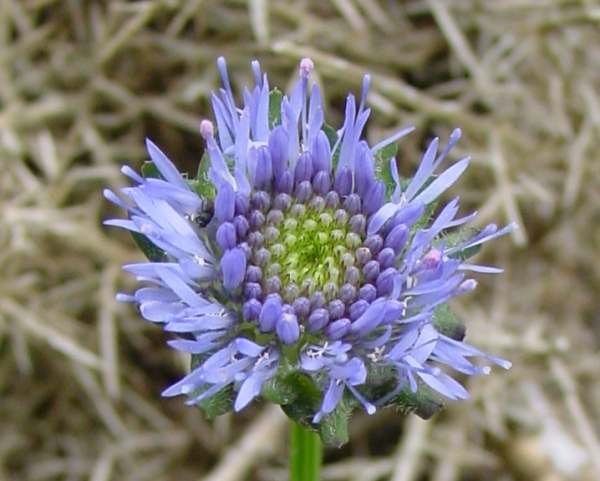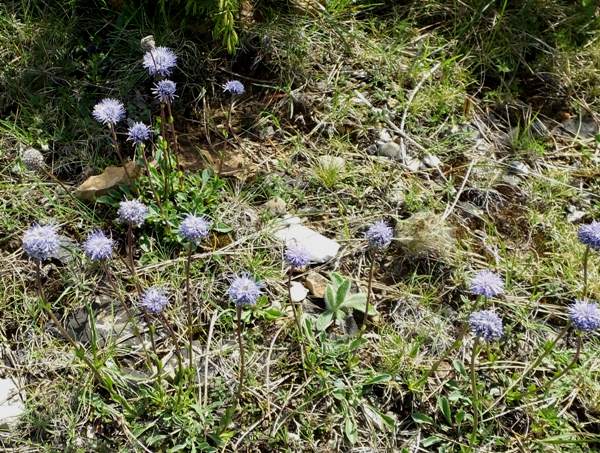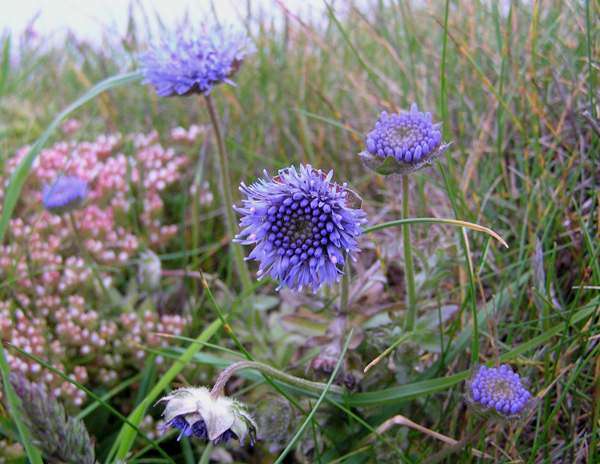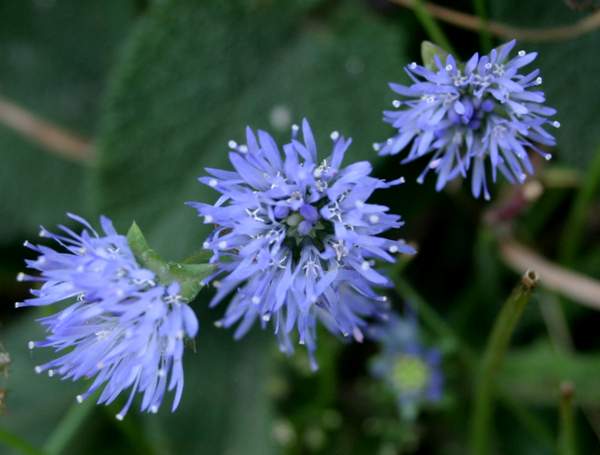Jasione montana - Sheep's-bit
Phylum: Magnoliophyta - Class: Equisetopsida - Order: Asterales - Family: Campanulaceae

Some people refer to this wildflower as Sheep's-bit Scabious, but it is not closely related to true scabious species such as Devil's-bit Scabious Succisa pratensis, which belong to the Honeysuckle family Caprifoliaceae.
Description
This low-growing biennial has a basal rosette of narrow, pointed leaves from which arise slender stems bearing blue scabious-like compound inflorescences each comprising 50 to 200 tiny tubular campanulate blue flowers.

Above: Jasione montana in southern France
Distribution
Sheep's-bit is common in Britain and Ireland; it also occurs on mainland Europe, becoming increasingly scarce towards the northern part of Scandinavia and similarly the southern extent is limited to south-central Europe. The range extends eastwards into western Asia; elsewhere, including North America, it is an introduction.
Habitat
This low-growing member of the Bellflower family prefers dry places. It is particularly common on clifftops and heaths, where it copes well with strong winds. Sheep's-bit favours acid soils and is so absent from calcareous substrates.

Blooming times
The first flowers appear in May and blooming continues into September. Sheep's-bit is usually at its best from late June until early August.

Similar species
Sheep's-bit is sometimes confused with Devil's-bit Scabious Succisa pratensis, a somewhat coarser but otherwise similar wildflower. The leaves of Sheep's-bit are long and narrow, while those of Devil's-bit Scabious are more oval. Although so similar in appearance these two wildflowers come from different families: Devil's-bit Scabious belongs to the Teasel family, Dipsacaceae, and its flowers are a darker blue than those of Sheep's-bit.
The specimens shown on this page were photographed on the Pembrokeshire Coast Path, in west Wales, and in the Aveyron region of southern France.
Sue Parker's latest ebook is a revised and enlarged second edition of the acclaimed Wildflowers in the Algarve - an introductory guide. Full details here...
Buy it for just £3.95 on Amazon...
Please Help Us: If you have found this information interesting and useful, please consider helping to keep First Nature online by making a small donation towards the web hosting and internet costs.
Any donations over and above the essential running costs will help support the conservation work of Plantlife, the Rivers Trust and charitable botanic gardens - as do author royalties and publisher proceeds from books by Pat and Sue.



